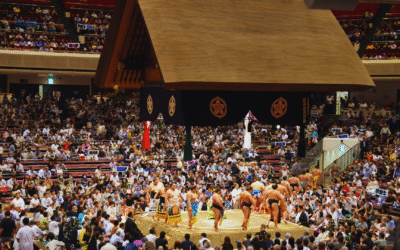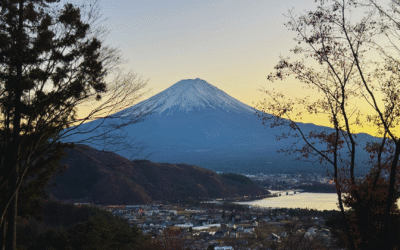Kabuki theatre, a cornerstone of Japanese performing arts, offers a mesmerising blend of drama, dance, and music that has enthralled audiences for centuries. Steeped in tradition yet continually evolving, Kabuki showcases the rich tapestry of Japanese culture through its elaborate costumes, stylized performances, and dynamic storytelling.
This guide to Kabuki talks about the rich history, intricate elements, and captivating performances of Kabuki, providing travellers and enthusiasts with the knowledge to fully appreciate and enjoy this unique cultural experience.
From its origins in the early 17th century to its status as a UNESCO Intangible Cultural Heritage, Kabuki has played a significant role in shaping Japan’s artistic landscape. Each performance is a feast for the senses, combining visually stunning set designs with powerful acting and exquisite music, often featuring traditional instruments like the shamisen. The highly stylized movements and vocal techniques used by Kabuki actors convey a depth of emotion and narrative complexity that is both compelling and unique.
Whether you’re a first-time visitor or a seasoned fan, this guide aims to illuminate the many facets of Kabuki, so let’s dive right in!
What is Kabuki?
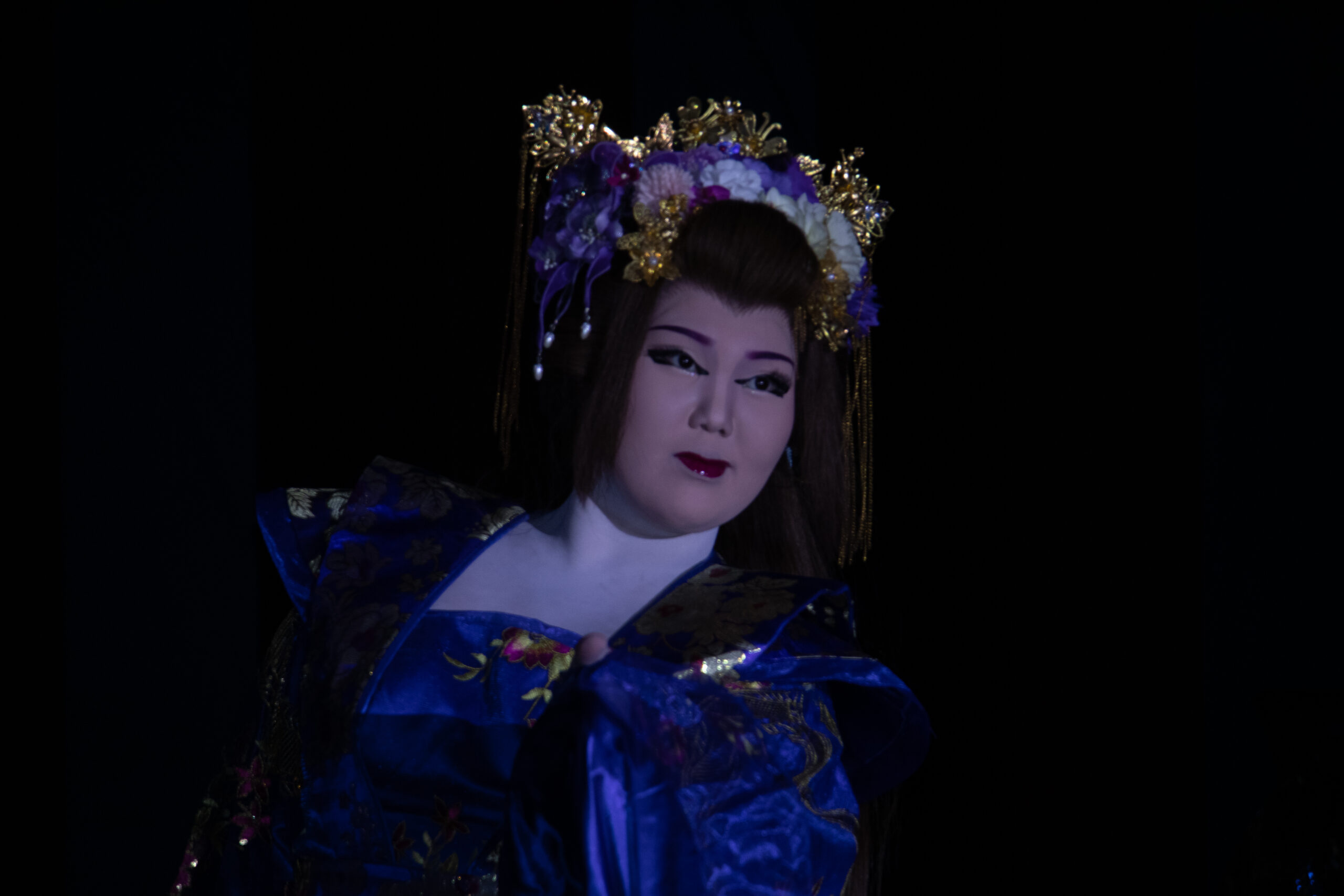
Kabuki is a classical Japanese dance-drama known for its stylized performances, elaborate costumes, and vibrant makeup. Originating in the early 17th century, Kabuki combines dramatic storytelling with traditional Japanese music and dance, creating a visually and emotionally engaging spectacle. This theatrical form is characterised by its bold and dynamic presentation, with actors performing exaggerated movements and expressions to convey emotions and storylines.
The integration of music, often played live using traditional instruments such as the shamisen (a three-stringed lute), further enhances the dramatic atmosphere. Kabuki is not just a performance but an immersive cultural experience that captures the essence of Japanese artistry and tradition.
The History of Kabuki
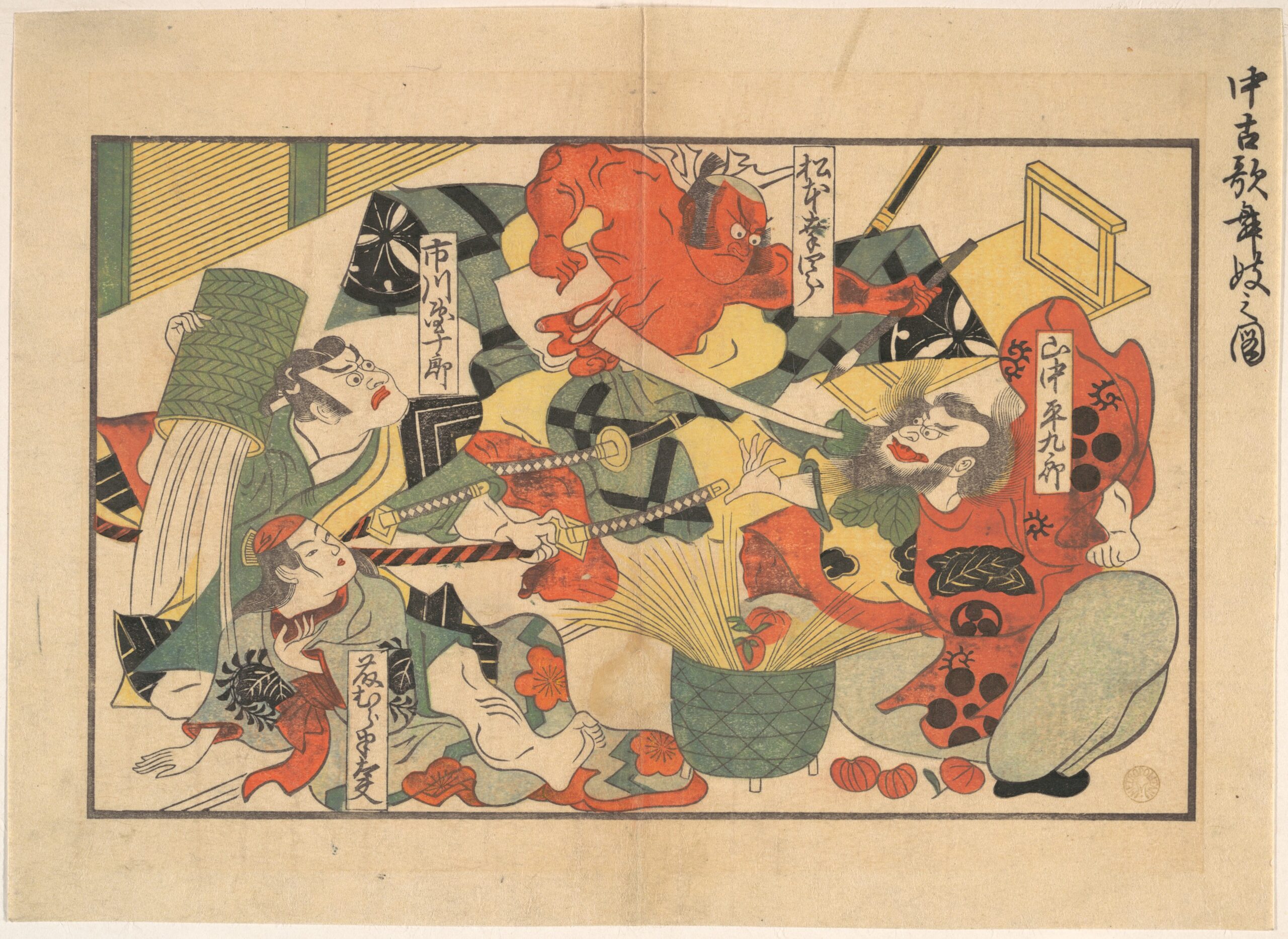
Ancient Origins
Kabuki’s roots can be traced back to the early Edo period (1603-1868). It began as a form of entertainment for the common people, performed by female dancers known as “onna-kabuki.” These early performances were often held in riverside entertainment districts and featured lively dance routines and comedic skits.
However, due to moral concerns and the perceived licentiousness of the performances, women were eventually banned from performing in 1629. This led to the rise of “wakashu-kabuki,” where young boys took on the roles, followed by “yaro-kabuki,” performed by adult men.
Male actors began to specialise in playing both male and female roles, giving rise to the tradition of “onnagata,” male actors who portray female characters with great skill and finesse. This unique aspect of Kabuki continues to captivate audiences today.
Development into a Structured Art Form
As Kabuki evolved, it became more structured, developing a distinct style and repertoire. The 18th century saw the establishment of formal play formats, including “jidaimono” (historical plays) and “sewamono” (domestic plays), each with its own set of conventions and storytelling techniques. Professional troupes formed, and renowned actors like Ichikawa Danjūrō and Nakamura Kanzaburō emerged as cultural icons.
Kabuki theatres were constructed in major cities such as Edo (now Tokyo), Osaka, and Kyoto, often featuring elaborate stage mechanisms, including revolving stages and trapdoors, to enhance the theatrical experience. The performances, rich in drama, action, and humour, became a major form of entertainment for all social classes, from commoners to samurai.
Modern Kabuki

Today, Kabuki is recognized as a significant cultural treasure, both in Japan and internationally. Major Kabuki theatres, such as the Kabuki-za in Tokyo and the Minami-za in Kyoto, host regular performances that attract both local and foreign audiences. These theatres are architectural marvels in themselves, often designed to reflect traditional Japanese aesthetics.
Modern Kabuki continues to honour its traditional roots while also experimenting with new themes and technologies. Contemporary productions may incorporate elements such as advanced lighting, special effects, and even digital projections to enhance the visual impact.
Additionally, some modern performances adapt classic Kabuki plays to contemporary settings or explore entirely new stories, ensuring the art form remains relevant and dynamic. Despite these innovations, the core elements of Kabuki—its stylized acting, elaborate costumes, and powerful storytelling—remain unchanged, preserving the rich heritage of this timeless theatrical tradition.
Kabuki Theatre Elements

Costumes and Makeup
Kabuki is known for its elaborate costumes and striking makeup, which are integral to the art form’s visual and symbolic impact. The costumes are often extravagant and meticulously crafted from rich fabrics such as silk and brocade, featuring bold and intricate designs. These designs are not just for aesthetic appeal but also serve to signify a character’s role, status, and personality. For instance, a villain might wear dark, ominous colours and patterns, while a hero or noble character would don bright, vibrant colours and luxurious materials.
The makeup, known as kumadori, is equally dramatic and significant. Kumadori makeup uses bold lines and vivid colours to enhance the actors’ facial expressions and highlight their emotions and traits. Red lines typically indicate strength and virtue, while blue or black lines can denote negative traits like jealousy or deceit. The application of kumadori is an art in itself, with each pattern and colour combination conveying specific character attributes and emotional states. This visual coding helps the audience immediately understand the nature of the character and their role in the story.
Acting and Movement
Kabuki actors, known as tachiyaku for male roles and onnagata for female roles, utilise exaggerated movements and gestures to convey the story. These movements are highly stylized and symbolic, with specific gestures, known as kata, having particular meanings that have been passed down through generations. For example, a sudden, sweeping gesture might indicate anger or frustration, while a slow, deliberate movement could signify contemplation or sorrow.
The actors’ training is rigorous, often beginning from a young age and requiring years of practice to master the complex techniques of Kabuki performance. This training includes learning how to move gracefully while wearing heavy costumes, mastering the art of makeup application, and understanding the symbolic meanings of various gestures and postures. Onnagata, in particular, undergo extensive training to perfect the delicate and refined movements associated with female roles, despite being male performers.
One of the unique aspects of Kabuki acting is the mie, a powerful pose struck by the actor at a climactic moment in the performance. The actor holds this pose, often accompanied by dramatic music and sound effects, to heighten the emotional impact and draw the audience’s attention to a pivotal point in the story. The mie is a hallmark of Kabuki and showcases the actor’s skill in conveying intense emotion through posture and expression.
Music and Sound
Music and sound are integral to Kabuki performances, providing a dynamic backdrop that enhances the drama and emotion of the scenes. Traditional Japanese instruments, such as the shamisen (a three-stringed lute) and taiko drums, play a central role in creating the musical landscape of Kabuki. The shamisen, with its distinct, resonant sound, often accompanies dance sequences and vocal performances, while the powerful beats of taiko drums add intensity to dramatic moments and fight scenes.
In addition to instrumental music, vocal performances are crucial in Kabuki. The actors themselves often sing or chant, using a technique known as nori, which involves a rhythmic and melodic delivery of lines that complements the musical accompaniment. Another key vocal element is joruri, the narrative chanting performed by a narrator, typically accompanied by the shamisen. The joruri narrates the story, providing context and commentary that guide the audience through the plot and enhance the emotional depth of the performance.
Sound effects, produced using various traditional instruments and tools, also play a significant role in Kabuki. For instance, wooden clappers called hyoshigi are used to signal the beginning and end of scenes, while other sound effects mimic natural sounds such as wind, rain, or footsteps, adding a layer of realism and atmosphere to the performance.
Together, these elements of costumes, makeup, acting, movement, music, and sound create the rich, multifaceted spectacle that is Kabuki. Each component is carefully crafted and executed to transport the audience into a world of dramatic storytelling, vibrant characters, and timeless traditions, making Kabuki a truly immersive and unforgettable experience.
Famous Kabuki Plays
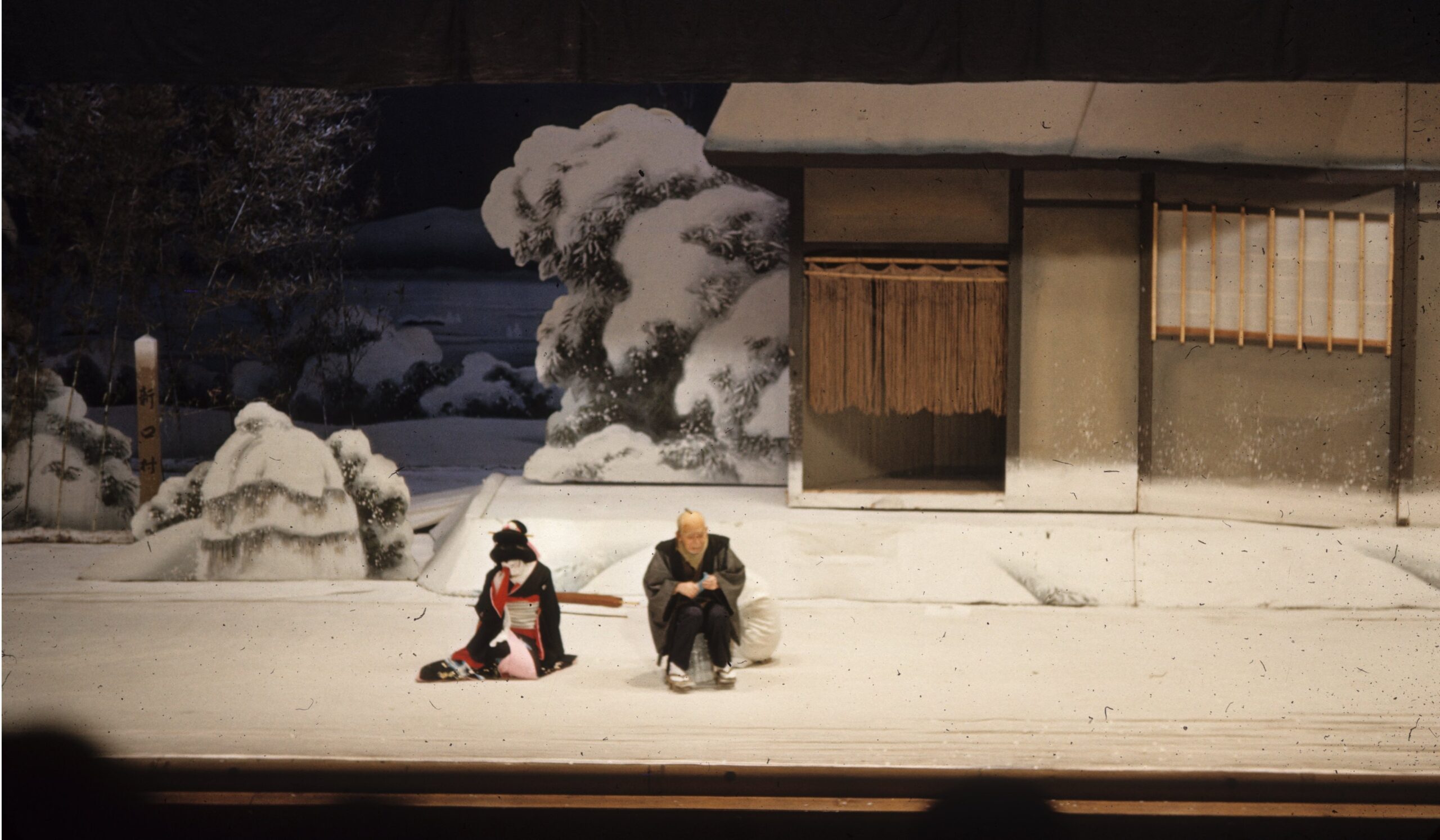
Kabuki theatre boasts a rich repertoire of plays, many of which are celebrated for their compelling stories, memorable characters, and dramatic climaxes. For travellers and foreigners looking to immerse themselves in this traditional art form, here are some of the most iconic Kabuki plays you can watch, along with information on where to see them:
“Kanadehon Chūshingura” (The Treasury of Loyal Retainers)
“Kanadehon Chūshingura” is perhaps the most famous Kabuki play, depicting the true story of the forty-seven ronin (samurai without a master) who avenged their lord’s unjust death. This epic tale of loyalty, honour, and revenge is set in the early 18th century and unfolds over several acts, each filled with intense drama and emotion. The play is known for its intricate plot, dramatic action scenes, and profound exploration of samurai ethics.
Where to Watch:
- Kabuki-za Theatre, Tokyo: The Kabuki-za in Ginza is one of the most prestigious Kabuki theatres in Japan, regularly featuring “Kanadehon Chūshingura” in its lineup. The theatre offers English audio guides to help foreign visitors follow the story.
- Minami-za Theatre, Kyoto: As the oldest Kabuki theatre in Japan, Minami-za offers a historic setting to enjoy this classic play. The theatre occasionally features performances of “Kanadehon Chūshingura,” especially during special events and festivals.
“Yoshitsune Senbon Zakura” (Yoshitsune and the Thousand Cherry Trees)
“Yoshitsune Senbon Zakura” is a beloved Kabuki play that follows the adventures of the legendary warrior Minamoto no Yoshitsune. The story intertwines historical events with elements of fantasy, featuring Yoshitsune’s escape from his brother’s forces and encounters with various characters, including spirits and supernatural beings. The play is known for its beautiful scenic design, captivating dance sequences, and complex character relationships.
Where to Watch:
- National Theatre, Tokyo: This modern venue offers regular Kabuki performances, including “Yoshitsune Senbon Zakura.” The National Theatre provides English subtitles via monitors, making it accessible for non-Japanese speakers.
- Shinbashi Enbujō Theatre, Tokyo: Located in the heart of Tokyo, this theatre is another excellent place to catch performances of “Yoshitsune Senbon Zakura,” often featuring prominent Kabuki actors.
“Sugawara Denju Tenarai Kagami” (Sugawara and the Secrets of Calligraphy)
“Sugawara Denju Tenarai Kagami” is a dramatic play based on the life of Sugawara no Michizane, a scholar and poet who was deified as the god of learning, Tenjin. The play weaves together historical facts and fiction, portraying Michizane’s unjust exile and the subsequent events that reveal his virtuous nature. It is celebrated for its intricate storytelling, elaborate costumes, and the famous “Terakoya” (temple school) scene, which showcases the emotional depth and complexity of Kabuki acting.
Where to Watch:
- Kabuki-za Theatre, Tokyo: As a hub for traditional Kabuki, Kabuki-za frequently stages “Sugawara Denju Tenarai Kagami,” allowing audiences to experience this masterpiece in a grand setting.
- Osaka Shochiku-za Theatre, Osaka: This theatre is a key venue for Kabuki in the Kansai region, offering performances of “Sugawara Denju Tenarai Kagami” and other classic plays. It provides a great opportunity for travellers in Osaka to enjoy Kabuki.
How to Watch Kabuki
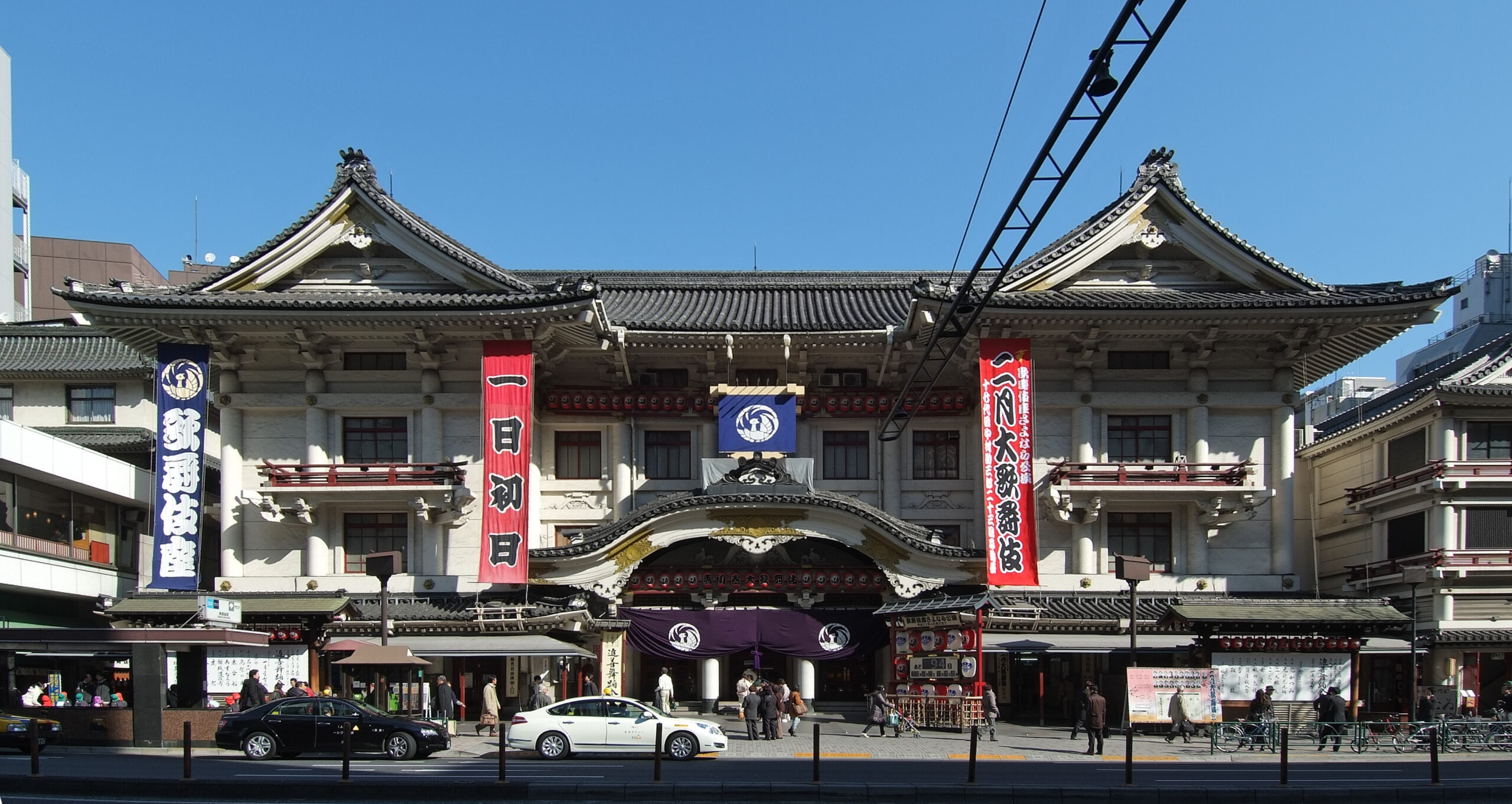
Buying Tickets
Tickets for Kabuki performances can be purchased online through the official websites of major theatres or via travel agencies specialising in Japanese cultural events. It is advisable to buy tickets in advance, especially for popular performances. Here are some details on where and how to buy tickets:
- Kabuki-za Theatre, Tokyo: Tickets can be purchased directly from the official Kabuki-za website or through ticket agencies such as Ticket Pia and Lawson Ticket.
- Minami-za Theatre, Kyoto: Tickets are available on the official Minami-za website , as well as from local tourist information centres and travel agencies.
Buying Tickets from Ticket Pia
Ticket Pia is a popular ticketing service in Japan. Here’s how you can purchase Kabuki tickets through Ticket Pia:
- Visit the Ticket Pia Website: Go to Ticket Pia and switch to the English version by clicking the language option at the top right of the page.
- Search for Kabuki Performances: Use the search bar to find Kabuki performances or navigate through the events section. You can search by theatre name, play title, or date.
- Select Your Performance: Choose the performance you are interested in. Review the available dates and times.
- Choose Your Seats: Select your preferred seating category (Box Seats, First-Class Seats, etc.). The website will display available seats and their prices.
- Purchase Tickets: Follow the prompts to enter your personal information and payment details. Ticket Pia accepts various payment methods, including credit cards.
- Receive Confirmation: After completing the purchase, you will receive a confirmation email. Print out the ticket or save the e-ticket on your smartphone to present at the theatre.
Buying Tickets from Lawson Ticket
Lawson Ticket is another widely used ticketing service in Japan. Here’s how to buy Kabuki tickets through Lawson Ticket:
- Visit the Lawson Ticket Website: Go to Lawson Ticket and switch to the English version if necessary by selecting the language option.
- Search for Kabuki Performances: Use the search function to look for Kabuki performances or browse through the events categories.
- Select Your Performance: Click on the performance you are interested in. Check the schedule for available dates and times.
- Choose Your Seats: Select the type of seats you prefer. The site will show the available options along with the prices.
- Purchase Tickets: Enter your personal details and choose your payment method. Lawson Ticket accepts credit cards and other payment methods.
- Ticket Collection: Lawson Ticket provides a unique code for your ticket. You can collect your physical ticket at any Lawson convenience store in Japan using this code. Follow the instructions provided in your confirmation email to print the ticket at a Lawson Loppi machine.
Need help booking your Kabuki ticket and want a more personalised experience that goes beyond just Kabuki? Consider taking advantage of Flip Japan Guide’s Travel Planning Service. Your first call is FREE!
Types of Seats
Kabuki theatres typically offer a range of seating options, catering to different preferences and budgets. Below are the common types of seats available at major Kabuki theatres such as the Kabuki-za Theatre in Tokyo, along with their approximate prices:
Kabuki-za Theatre, Tokyo
- Box Seats (Sajiki-seki):
- Description: These are luxurious box seats located close to the stage, providing an immersive experience. The seats are tatami mat style, offering a traditional feel.
- Price: Approximately ¥17,000 – ¥20,000 per person.
- First-Class Seats (Kamite/Simote Isu-seki):
- Description: These seats are located in the front section of the orchestra, offering an excellent view of the stage.
- Price: Approximately ¥12,000 – ¥15,000.
- Second-Class Seats (Naka Isu-seki):
- Description: Located further back or in the mezzanine, these seats are more affordable while still providing a good view.
- Price: Approximately ¥7,000 – ¥10,000.
- Third-Class Seats (Makumi-seki):
- Description: These seats are located in the rear sections of the auditorium and are the most budget-friendly option.
- Price: Approximately ¥4,000 – ¥6,000.
- Gallery Seats (4F Isu-seki):
- Description: These seats are on the fourth floor and offer a broader perspective of the performance.
- Price: Approximately ¥2,000 – ¥3,000.
Tips for Attending
- Arrive Early: Performances often begin with a short introduction and can last several hours, including intermissions. Arriving early ensures you can find your seat and settle in before the show starts. Doors usually open about 30 minutes before the performance.
- Dress Respectfully: Smart-casual attire is encouraged to show respect for the cultural event. While there is no strict dress code, avoid overly casual clothing like shorts and flip-flops.
- Follow Etiquette: Remain quiet during the performance to avoid disturbing others. Flash photography and recording are strictly prohibited. Show your appreciation through polite applause at appropriate moments, such as after a dramatic mie pose.
- Intermissions: Kabuki plays often have multiple acts with intermissions in between. Use this time to explore the theatre, visit the gift shop, or enjoy traditional Japanese snacks available at the venue.
- English Audio Guides: Many major Kabuki theatres offer English audio guides or subtitle services to help foreign visitors understand the performances. Check the theatre’s website for availability and details.
Immersing Yourself in Kabuki Culture Beyond Live Performances
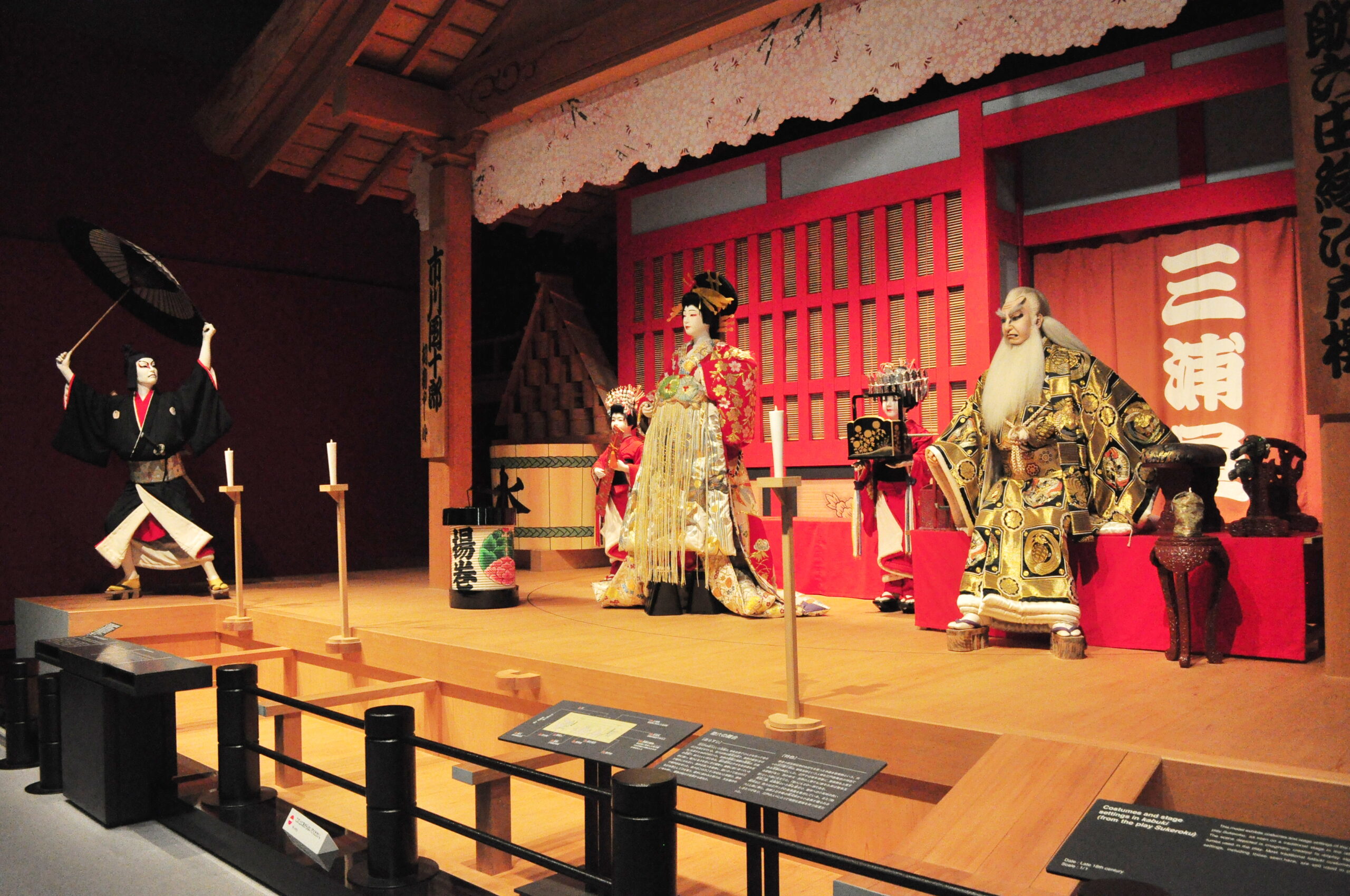
While attending a live Kabuki performance is a thrilling and immersive experience, there are many other ways to delve deeper into this fascinating art form and its rich cultural heritage. From exploring specialised museums to participating in hands-on workshops, here are some ways to immerse yourself in Kabuki culture beyond the theatre:
Kabuki Museums
Kabuki museums provide a comprehensive look at the history, artistry, and cultural significance of Kabuki theatre. These institutions house extensive collections of artefacts, including costumes, props, scripts, and photographs, that tell the story of Kabuki’s evolution over the centuries.
- Kabuki-za Gallery, Tokyo: Located within the Kabuki-za Theatre, the Kabuki-za Gallery offers an insightful look into the world of Kabuki. Visitors can view a wide range of exhibits, including costumes, props, and set pieces. The gallery also provides interactive displays and videos to enhance your understanding of Kabuki’s history and performance techniques. Visit Kabuki-za Gallery’s official website.
Kabuki Workshops
Participating in a Kabuki workshop is an enriching way to gain hands-on experience and a deeper appreciation for the art form. These workshops offer practical lessons in various aspects of Kabuki, from makeup application to stage movements.
- Kabuki Experience Program at the National Theatre, Tokyo: The National Theatre of Japan offers a Kabuki experience program where participants can learn about the art form through practical lessons on makeup, costumes, and movements. This program provides a unique opportunity to engage directly with Kabuki performers and gain insights into their craft.
Online Resources and Documentaries
For those unable to attend live performances or workshops, numerous online resources and documentaries provide a convenient way to learn about Kabuki. Websites, video platforms, and streaming services offer a wealth of information, from historical documentaries to recordings of famous performances.
- Japan Foundation, New York – Kabuki Videos: The Japan Foundation offers a collection of Kabuki videos with English subtitles. These videos cover various aspects of Kabuki, including performance recordings, actor interviews, and behind-the-scenes footage.
- NHK World – Kabuki Kool: NHK World’s “Kabuki Kool” is a program that introduces Kabuki to an international audience. Hosted by actor Kataoka Ainosuke VI, the show explains the nuances of Kabuki theatre and showcases famous scenes from performances.
Experience the Timeless Art of Kabuki

Kabuki theatre offers an extraordinary journey into the heart of Japanese culture, showcasing a rich blend of history, artistry, and tradition. Whether you are sitting in the audience of a grand theatre, exploring the intricate exhibits in a Kabuki museum, or participating in a hands-on workshop, the vibrant world of Kabuki provides a deeply immersive and unforgettable experience.
Each element, from the elaborate costumes and dramatic makeup to the stylized movements and evocative music, weaves together to create a tapestry of performance art that has captivated audiences for centuries.
For travellers and enthusiasts alike, immersing in Kabuki is more than just witnessing a performance; it is about connecting with a cultural heritage that has been meticulously preserved and celebrated. By taking the time to understand its origins, appreciating its intricate elements, and engaging with the various ways to experience Kabuki beyond the stage, you open yourself to a deeper appreciation of this timeless art form.
Embrace the opportunity to explore, learn, and be enchanted by Kabuki, and you will find a unique and enriching cultural adventure that stays with you long after the final curtain falls.






